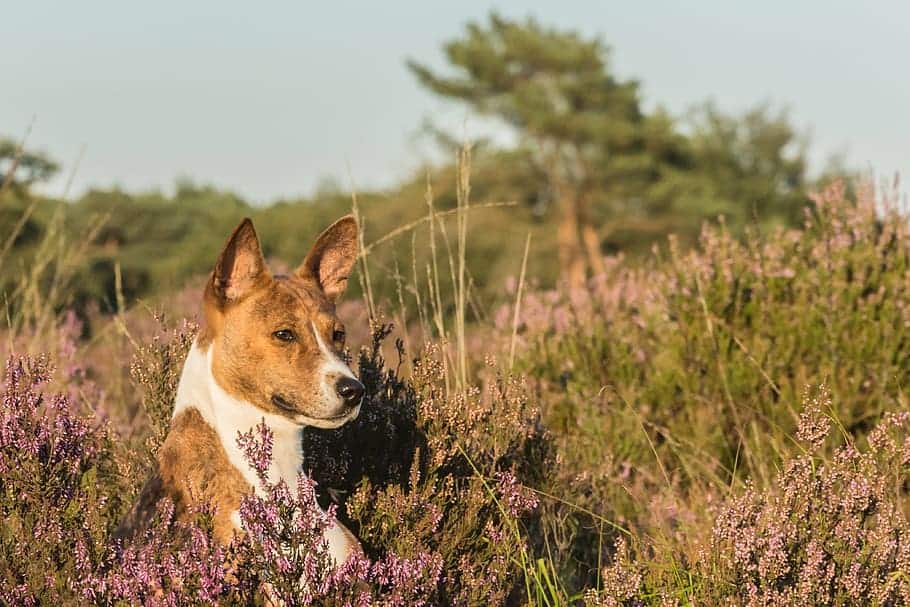Basenji History and Origins (Where do Basenji Dogs Come From)
Where do Basenji dogs come from exactly? If you’ve ever asked yourself that question, then in this post, we will be looking into this question to help establish just where this breed is from as well as a bit of history on how they ended up in Europe, America and then the rest of the world.
Basenjis are a primitive breed of dog that hails from the tropical rainforests of Central Africa. Basenjis were first domesticated in the Congo, where they were used as hunters and sentinels. While their bark is distinctive and high-pitched, Basenjis rarely bark but give out a yodel.

History of The Basenji
Basenjis are one of the most ancient dog breeds in the world. In fact, they are sometimes referred to as “African Barkless Dogs,” because they have no vocal cords and can only bark through throaty sounds that sound like a yodel or a whine.
Their origins can be traced to the Congo but they have also been depicted in Ancient Egypt hieroglyphics showing that it was also a popular god at the height of the ancient Egyptian civilization.
The name “Basenji” comes from the Lingala language of Central Africa, meaning “bush dog.” Because of their unique physical characteristics and temperament, Basenjis have attracted attention from both animal lovers and scientists alike.
As such, they may be one of the most researched dogs in the world. A study conducted by Cornell University reveals that Basenjis share an unusually close genetic relationship with wolves (30% closer than even Chihuahuas to grey wolves). Additionally, Basenjis share around 93% of genes with other dogs—almost double the average amount for domestic dogs.
Basenjis Were Originally Bred to be Hunting Dogs

As a breed, they were developed as hunting dogs, and are still used as such by some tribes even today. The Basenji is a small dog with cat-like feet and a short coat that can come in a variety of colors, including black, red, tri-color, or brindle.
The most distinctive feature of the breed is their curly tail that curls up over their back when they are excited. Basenjis are fast and agile dogs, making them great hunters. They were originally bred to hunt small game like rabbits and squirrels during the day in hot weather.
Basenjis are very intelligent and independent. They have been called “the barkless dog” because they make a yodeling sound instead of barking. This makes them popular apartment dogs for people who don’t want to disturb the neighbours, well most of the time!
Basenjis have a reputation for being stubborn and difficult to train, so be sure to enrol in training classes as soon as you get your puppy.
In the 1800s, Basenjis Became Popular in Europe and America

The Basenji was first taken to Europe in 1880 but they succumbed to distemper which had no cure at the time. It was not until 1938 that the Basenjis were brought again to England and successfully bred by Mrs. Olivia Burns.
Basenjis first appeared in The United States and Canada in 1937. The breed grew very fast in popularity and became recognized by the American Kennel Club as a breed in the 1940s. Today the Basenji is one of the most loved dogs in all these places.
Today, the Basenji is one of the most popular breeds in America. Though it is little understood by most “outsiders” with a reputation for being difficult, those who actually own Basenjis will tell you that it is one of the most loving and loyal dog, though a bit hard-headed.

Conclusion
As you can see, the Basenji is a dog breed that hails from central Africa in a country now known as the Democratic Republic of the Congo. It is a loving dog that is somewhat misunderstood. If you have the privilege of owning one though, you will understand that it is more than just a family dog but an actual part of the family.